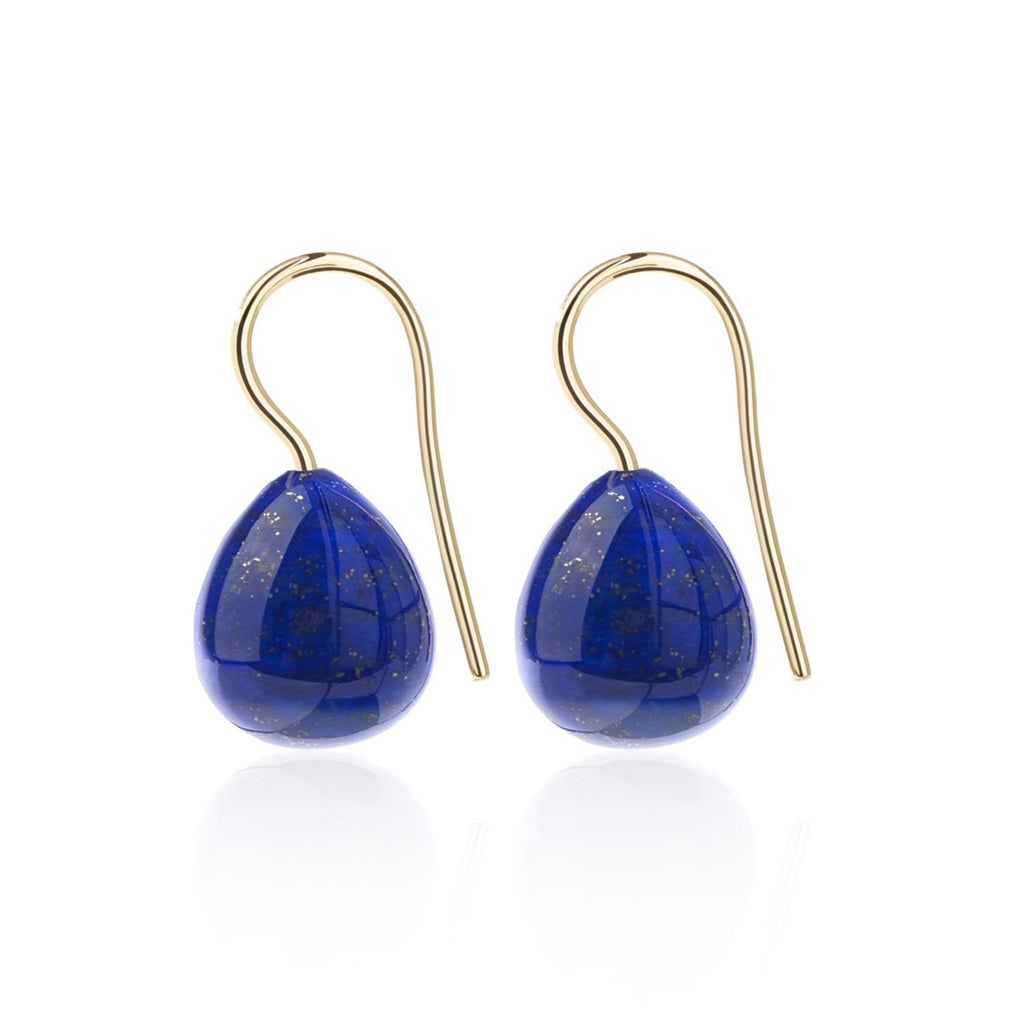
Behind The Gems: Lapis Lazuli
Share
“Behind the Gems” is a long-running monthly series that takes you on an exclusive, behind-the-scenes tour of our signature collections.
If you’re fascinated by gemstones as much as we are, you’re going to love our subject today: lapis lazuli. A stone that spans thousands of years of history and generations upon generations of jewellery connoisseurs…
Lapis Lazuli Facts: Composition and Appearance
Lapis lazuli is a metamorphic rock, which means that it has formed through the transformation of previous rock types under intense heat or pressure. As a result, it has a mixed composition: lazurite (25-40%), calcite and pyrite, as well as sodalite, diopside, amphibole, feldspar or mica.
The exact proportion of the composites determines the apparent colour of the stone. Lazurite is deep blue, pyrite has a yellow metallic shine, while calcite creates white veins or speckles. The most valuable gems are intensely blue and dusted with flecks of golden pyrite in a desirable, evenly-spread pattern. Although large stones are not uncommon, jewellery-quality stones are very rarely over 10ct in size.
At 5 or 6, it falls right in the middle of the Mohs scale - harder than malachite, but softer than quartz.
Lapis Lazuli Facts: History, Etymology and Symbolism
Continuously mined for over 7000 years, from the Sar-e-Sang deposit in Afghanistan (one of the oldest mines in the world), lapis lazuli has been treasured for civilisations from Mesopotamia to the Egyptian pharaohs - most notably, in the funeral mask and sarcophagus of Tutankhamun (1341-1323BC). Currently, they are mined in Afghanistan, Chile, Russia, USA, Angola, Canada, Pakistan, Italy and India.
Valued for its celestial blue hues and relative ease of carving or grinding, lapis lazuli has been held in high regard for centuries not only for decorative purposes (think jewellery, bowls, inlays, beads and amulets), but also as a decadent paint, a dye for clothing and as an eye-shadow by Cleopatra.
Lapis is Latin for “stone”, whilst lazuli is the genitive form of the Latin "lazulum", derived from the Persian name of the stone: "lajevard". In ancient Persia, the stone’s beautiful patterning was thought to represent the night sky, making it a popular choice for protective evil eye amulets.
In the Middle Ages and Renaissance period, its use as an ultramarine pigment was reserved for depicting royalty, religious figures, angels and the Virgin Mary. This continued up until the 19th Century, when cheaper and chemically identical substitutes became available.
Our Lapis Lazuli Pieces
We fully believe in the appeal of a simple pair of drop earrings. So much so, that we offer them in three distinct sizes and in a variety of gemstones and colours. And now, we’re adding lapis lazuli to the mix.
Combining the sleek curvature of an 18ct yellow gold hook with the mesmerising quality of this deep blue gemstone, our newest drop earrings are minimalist and expressive at the same time:




